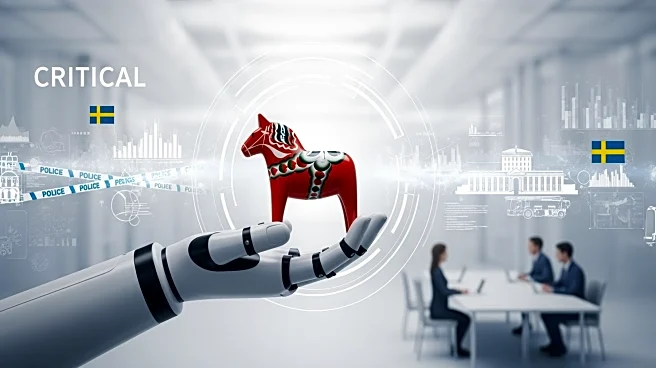What's Happening?
Bayer CEO Bill Anderson has introduced a radical self-organization experiment within the company, eliminating traditional middle management roles and creating a marketplace of project-based 'mission teams.' These teams function as mini-startups, focusing
on specific goals over 90-day sprints. The initiative aims to foster a Netflix-like culture of trust and high-quality work, reducing bureaucracy and enhancing efficiency. The experiment has led to significant achievements, such as the successful marketing of the prostate cancer drug Nubeqa, which surpassed $1 billion in U.S. sales ahead of schedule.
Why It's Important?
Bayer's self-organization model represents a significant shift in corporate management, challenging traditional hierarchical structures. By empowering employees to work autonomously, the company aims to increase innovation, reduce costs, and improve product development times. This approach may influence other organizations to reconsider their management practices, particularly in light of economic challenges and the growing role of artificial intelligence in business operations. The experiment highlights the potential benefits of decentralized management, including increased employee engagement and faster decision-making.
What's Next?
Bayer's self-organization experiment is ongoing, with parts of the company still transitioning to the new structure. The success of this model may lead to further adoption of decentralized management practices across the industry. As Bayer continues to refine its approach, it may explore additional strategies to enhance employee collaboration and innovation. The company's experience may serve as a case study for other organizations considering similar management transformations.
Beyond the Headlines
The shift towards self-organization at Bayer raises questions about the future of middle management roles and the impact of artificial intelligence on corporate structures. While the model offers potential benefits, it also presents challenges, such as managing internal tensions and ensuring effective collaboration. The experiment reflects broader trends in workplace management, emphasizing flexibility, autonomy, and adaptability in response to changing economic and technological landscapes.













